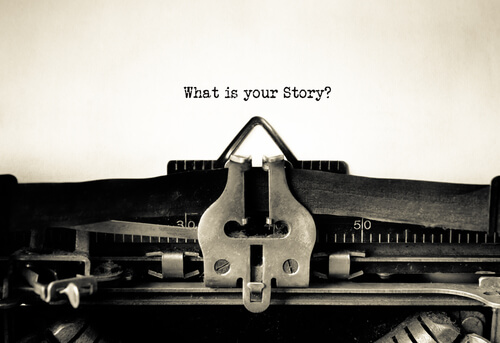 Think back to the last great presentation that you watched. How did the speaker begin? Did he or she start by jumping right into the details or did they launch into a narrative, setting the stage for what was to come?
Think back to the last great presentation that you watched. How did the speaker begin? Did he or she start by jumping right into the details or did they launch into a narrative, setting the stage for what was to come?
As presenters, in our jobs, community involvement, or in the classroom, we have the opportunity to become great storytellers, crafting narratives that bring meaning and context to the information that we present on. Whether the presentation includes a story of an individual who benefitted from a specific government program during the president’s State of the Union Address or a funny twist to explain tax implications from charitable giving in your accountancy masters course, stories matter and will bring the humanity back into your presentation.
The thesis, that stories matter, can help explain why TED Talks have become a cultural phenomenon. We are glued to these presentations not just because the presenters are highly credentialed for their work, but because they have learned to package the information in a way that can resonate with us personally.
The art of storytelling fills a gap that negatively impacts most presentations—the ability for the audience to discern what is vital from what is trivial. The story illustrates key ideas and themes and delivers them in a “sticky” manner.
The beauty of storytelling is that it is not just limited to large, public speaking events. Luckily for you, this means that you can begin implementing it at work or in school, with your next presentation.
If you like this idea, but don’t know where to begin, here are a few tips to start your journey as a storyteller:
Understand your audience and what stories may resonate with them. If the class or organization has shared experiences for you to draw on to make your point, bring these stories into the mix. People enjoy authentic and relatable stories.
Practice, practice, and practice some more. Storytelling is hard. None of us are perfect at it. Unlike presentations that just dump information on you from start to finish, storytelling requires a well thought out plan and a way to connect it to the topic of discussion. If done poorly, it can leave the audience confused. So practice telling the story and connecting it to the content far more than you would have done for just a knowledge dump.
Experiment with different storytelling styles and find the right one for you. Some people prefer utilizing specific models, like “villain-victim-hero” storytelling model, while others prefer to begin with an off-beat story and end with a twist. It’s up to you—you’re the storyteller. Just become comfortable with the style so it sounds natural.
The next time you are asked to give a presentation, I hope you consider reframing the task to becoming that of a storyteller. Your audience will thank you for reminding them of what is really important through the use of a great story.



